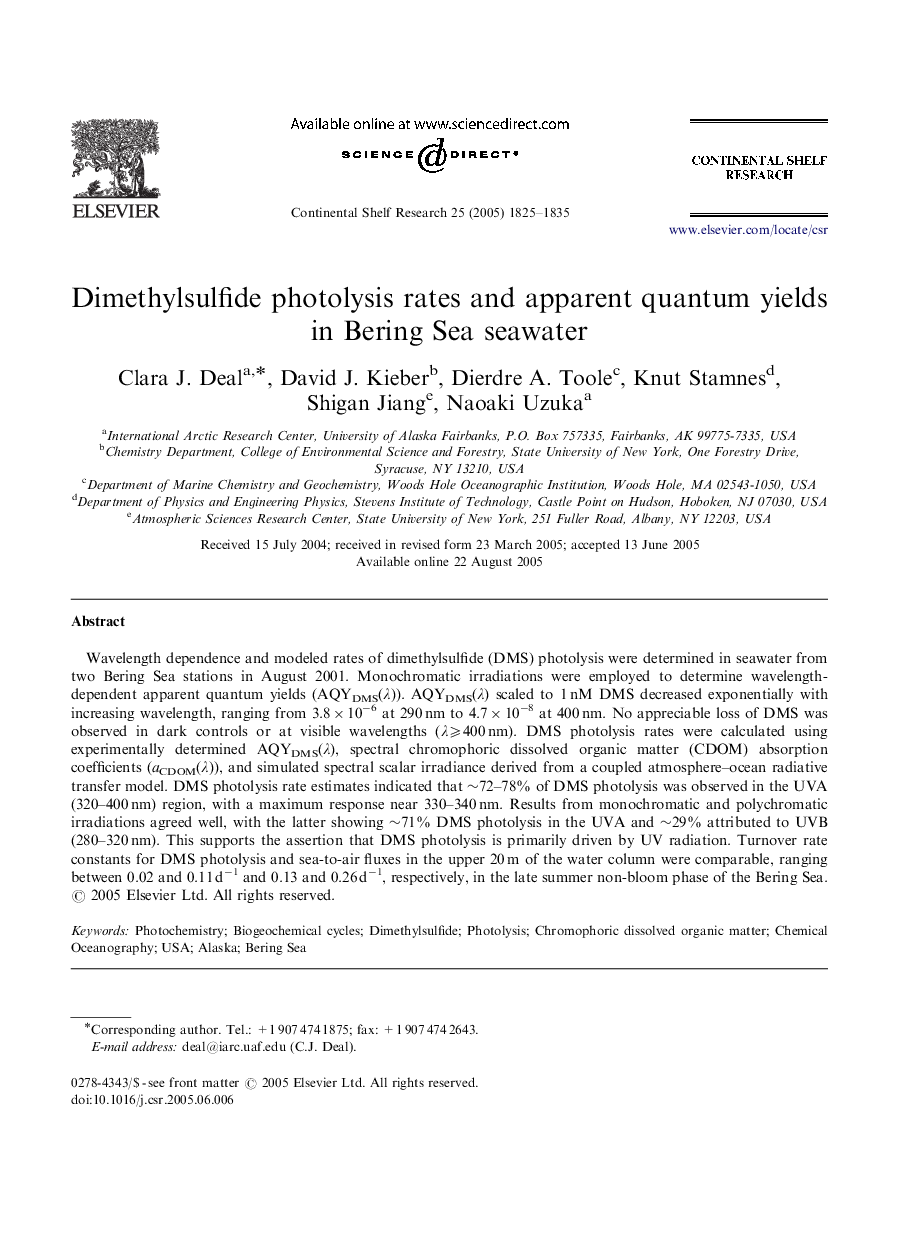| Article ID | Journal | Published Year | Pages | File Type |
|---|---|---|---|---|
| 9479189 | Continental Shelf Research | 2005 | 11 Pages |
Abstract
Wavelength dependence and modeled rates of dimethylsulfide (DMS) photolysis were determined in seawater from two Bering Sea stations in August 2001. Monochromatic irradiations were employed to determine wavelength-dependent apparent quantum yields (AQYDMS(λ)). AQYDMS(λ) scaled to 1 nM DMS decreased exponentially with increasing wavelength, ranging from 3.8Ã10â6 at 290 nm to 4.7Ã10â8 at 400 nm. No appreciable loss of DMS was observed in dark controls or at visible wavelengths (λ⩾400 nm). DMS photolysis rates were calculated using experimentally determined AQYDMS(λ), spectral chromophoric dissolved organic matter (CDOM) absorption coefficients (aCDOM(λ)), and simulated spectral scalar irradiance derived from a coupled atmosphere-ocean radiative transfer model. DMS photolysis rate estimates indicated that â¼72-78% of DMS photolysis was observed in the UVA (320-400 nm) region, with a maximum response near 330-340 nm. Results from monochromatic and polychromatic irradiations agreed well, with the latter showing â¼71% DMS photolysis in the UVA and â¼29% attributed to UVB (280-320 nm). This supports the assertion that DMS photolysis is primarily driven by UV radiation. Turnover rate constants for DMS photolysis and sea-to-air fluxes in the upper 20 m of the water column were comparable, ranging between 0.02 and 0.11 dâ1 and 0.13 and 0.26 dâ1, respectively, in the late summer non-bloom phase of the Bering Sea.
Keywords
Related Topics
Physical Sciences and Engineering
Earth and Planetary Sciences
Geology
Authors
Clara J. Deal, David J. Kieber, Dierdre A. Toole, Knut Stamnes, Shigan Jiang, Naoaki Uzuka,
